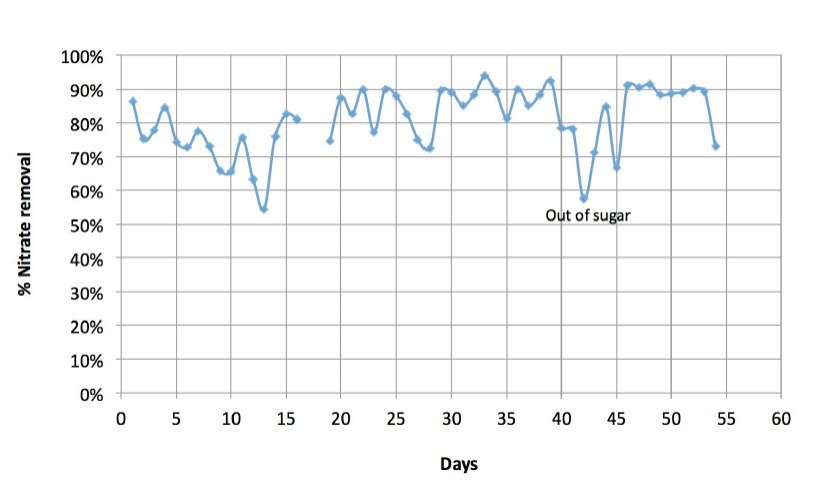
Features
Recirc
Towards zero liquid discharge: Denitrification and refractory organic cleanup in RAS
Recirculating aquaculture systems (RASs) are evolving towards even higher levels of water recycling and water efficiency. This was the message presented by Dr. Dallas Weaver from Scientific Hatcheries, Huntington Beach, California, at the Recirculating Aquaculture Conference held last August in Roanoke, Virginia. Weaver and his colleagues Mark Francis and Jimmy Williamson from Aquaneering, Inc. San Diego, California; and Conal True from Universitad Autónomia de Baja California, Ensenada, Mexico, have designed, built, tested and installed a denitrification system geared to service multiple RAS systems while maintaining biosecurity between them.
March 2, 2017 By David Scarratt
 Dr Dallas Weaver and colleagues have built
Dr Dallas Weaver and colleagues have builtCumulative feed burden (CFB), expressed in kg/m3 of the dry weight of feed used in the system divided by the liquid discharge volume (including wet sludge) from the system, is a common way of viewing intensiveness of RAS operations.
In RAS technology with suspended solids (SS) removal and O2, NH3, pH, CO2, temperature and salinity control, nitrate is the final product and its concentration, along with some refractory organic compounds, tends to build up as the CFB increases. By adding a denitrification capability and reducing the NO3 to Nitrogen gas N2, it was expected that CFB could be increased by a factor of 10+, thus decreasing water usage. At this point, when water consumption is at an absolute minimum, an aquaculture facility becomes relatively independent of the actual water supply, and can be sited at any location desirable for logistical or other reasons. This flexibility is very valuable for hatcheries, research labs and other aquatic facilities where water supply is limited by cost, regulation, or other constraints.
New RAS minimizes liquid discharges
The denitrification unit is geared to service multiple RAS systems in a hatchery where the ongoing drought on the West coast of North America has effectively reduced fresh water supply to below the point where a conventional RAS can be operated. The initial NO3(N) design load was for 1.8 kg/day.
In principle, bacteria can remove NO3 from water under anaerobic reducing conditions with no oxygen and low ORP readings (-50 to -150 mV). However, a second treatment step is required to clean up some of the undesirable anaerobic by-products and other refractory organics with a fine media, fluidized bed bio-filter. Instead of using the standard methanol or elemental sulfur as a reducing element for denitrifying bacteria, the system uses common sugar as a carbon source, thus eliminating the need to handle flammable and hazardous material.
In correspondence with Hatchery International, Weaver noted that the use of sugar as a carbon source is somewhat unique, but the whole objective was to avoid the regulatory insanity that goes with using flammable hazardous materials. Purchasing bags of sugar is a lot easier and cheaper than having approved flammable enclosures, inspections, hazardous materials permits, etc., and the added frustrations of “watching inspectors demonstrate their ignorance of chemistry and mastery of archaic bureaucratic thinking at the same time.”
The entire system was designed and skid-mounted to minimize installation time and effort. This design approach allowed for testing and activation of the media for the bio-filters before installation.
The system was started up and the bioreactors stabilized at the Aquaneering Inc. facility in San Diego, CA, where the microbiology and feedback control systems were tuned before shipment to the site. Having the biological startup, with its inevitable time delays completed before shipment allowed almost instant startup at the hatchery.
For more information contact Dallas Weaver at: deweaver@mac.com.
– DJS
Print this page





